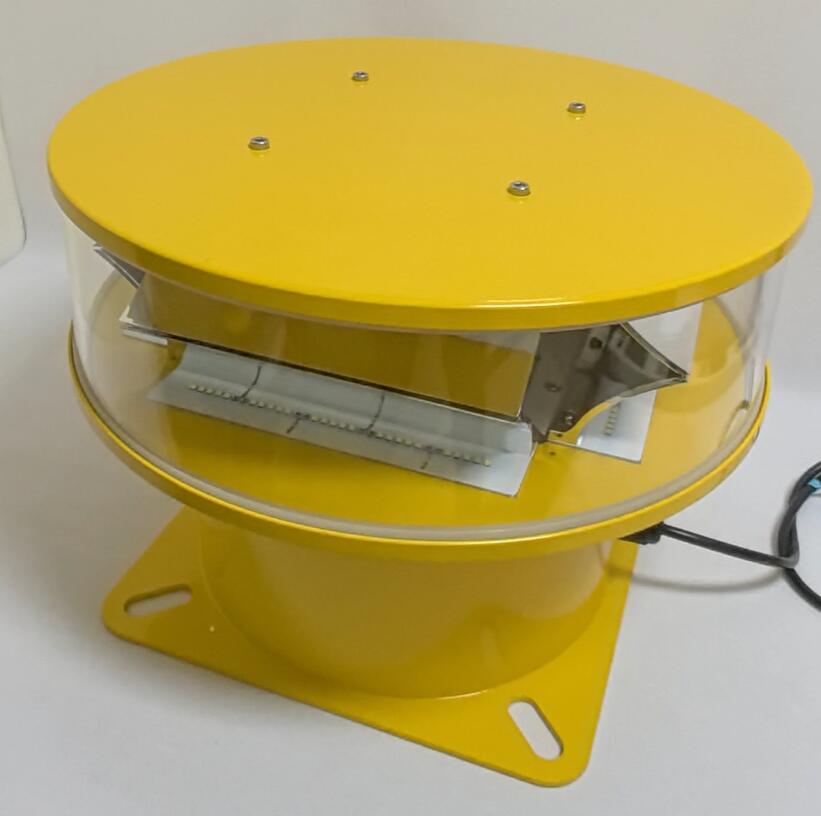Aviation Obstruction Lamp: The Guardian of Skyscraper Safety in Modern Airspace
As urban landscapes grow vertically and wind farms expand globally, the aviation obstruction lamp has become an indispensable safety component in modern airspace management. These specialized warning lights serve as silent sentinels, protecting both aircraft and ground structures from potential collisions. This article examines the critical role of aviation obstruction lamps, their technological evolution, and their importance in maintaining safe air navigation amid increasingly crowded skies.
The Critical Function of Aviation Obstruction Lamps
Aviation obstruction lamps perform three vital safety functions:
Visual Warning System - Provides 24/7 visibility of tall structures to pilots in all weather conditions

Height Indicator - Helps aircraft maintain proper altitude clearance through color-coded lighting systems
Collision Prevention - Reduces accident risks near airports, wind farms, and urban high-rises
| aviation obstruction lamp |
The International Civil Aviation Organization (ICAO) mandates their installation on any structure exceeding 45 meters (148 feet) in height, with specific requirements based on location and structure type.
Classification and Technical Specifications
Modern aviation obstruction lamps are categorized by intensity and application:
By Light Intensity
Low Intensity (L-810) - For structures under 45 meters
| aviation obstruction lamps |
Medium Intensity (L-864) - For structures between 45-150 meters
High Intensity (L-856) - For structures exceeding 150 meters or near flight paths
By Light Type
Red Steady-Burning - Standard for nighttime marking
White Strobe - Used for daytime visibility
Dual Lighting Systems - Combine both for all-weather effectiveness
Technical advancements have introduced LED-based aviation obstruction lamps that offer:
50,000+ hour lifespans
60% energy savings compared to traditional lighting
Self-monitoring capabilities with failure alerts
Industry Applications and Case Studies
Urban Infrastructure
The Shanghai Tower (632m) employs a multi-tiered aviation obstruction lamp system with:
High-intensity white strobes at the pinnacle
Medium-intensity red lamps at intermediate levels
Synchronized flashing patterns for clear identification
Renewable Energy Sector
Offshore wind farms like London Array use specially designed aviation obstruction lamps featuring:
Corrosion-resistant marine-grade construction
Radar-activated lighting systems
Integrated solar power for remote locations
Telecommunications
The KVLY-TV mast (629m) in North Dakota utilizes:
FAA-compliant L-856 high-intensity lamps
Redundant power systems
Automated brightness adjustment based on visibility conditions
Emerging Technologies and Future Trends
The aviation obstruction lamp industry is evolving with:
Smart Lighting Systems - IoT-enabled lamps that transmit operational status to air traffic control
Adaptive Brightness Technology - Automatic intensity adjustment based on real-time weather data
Eco-Friendly Solutions - Solar-powered units with battery backup systems
Aircraft Detection Systems - Radar-triggered lighting that activates only when aircraft approach
Regulatory Compliance and Best Practices
Global standards require:
FAA AC 70/7460-1L (USA)
ICAO Annex 14 (International)
CASA MOS Part 139 (Australia)
Best installation practices include:
Proper spacing based on structure height
Regular maintenance schedules
Backup power provisions
Photometric testing for intensity verification
The humble aviation obstruction lamp plays an outsized role in modern aviation safety. As structures grow taller and airspace becomes more congested, these vital warning systems will continue to evolve with smarter, more efficient technologies. For architects, urban planners, and energy developers, proper implementation of aviation obstruction lamps isn't just regulatory compliance—it's a fundamental responsibility to protect lives and enable safe air travel for generations to come.
By investing in advanced aviation obstruction lamp systems and adhering to international standards, we can ensure that our vertically expanding world remains safely navigable for all aircraft, day and night, in all weather conditions.
